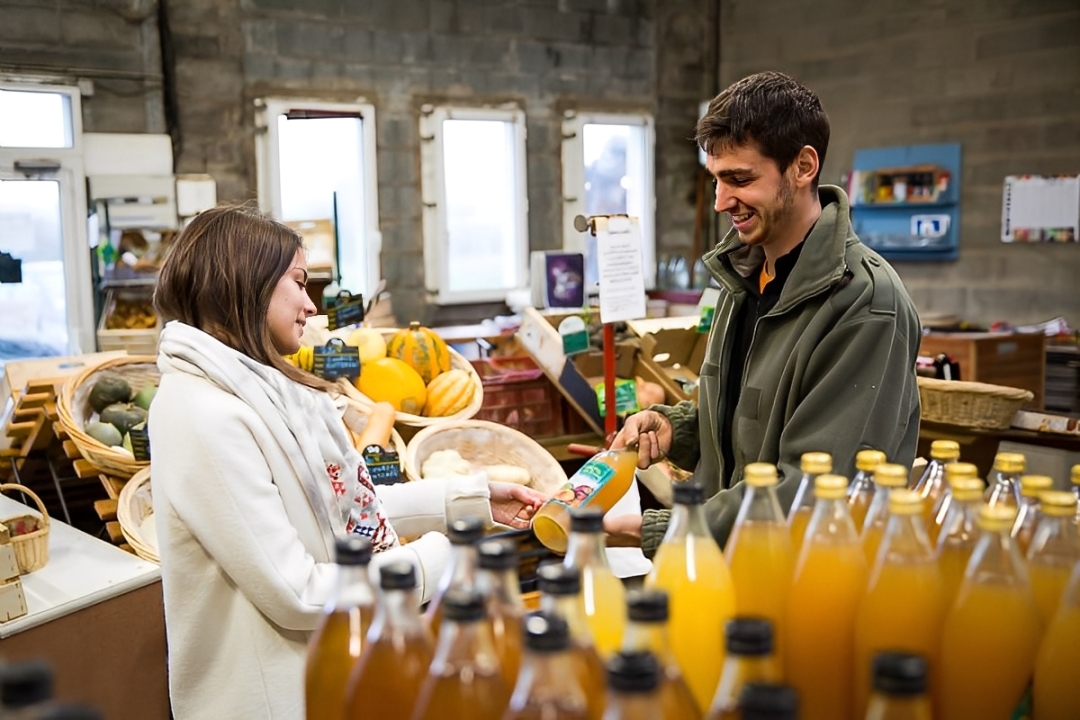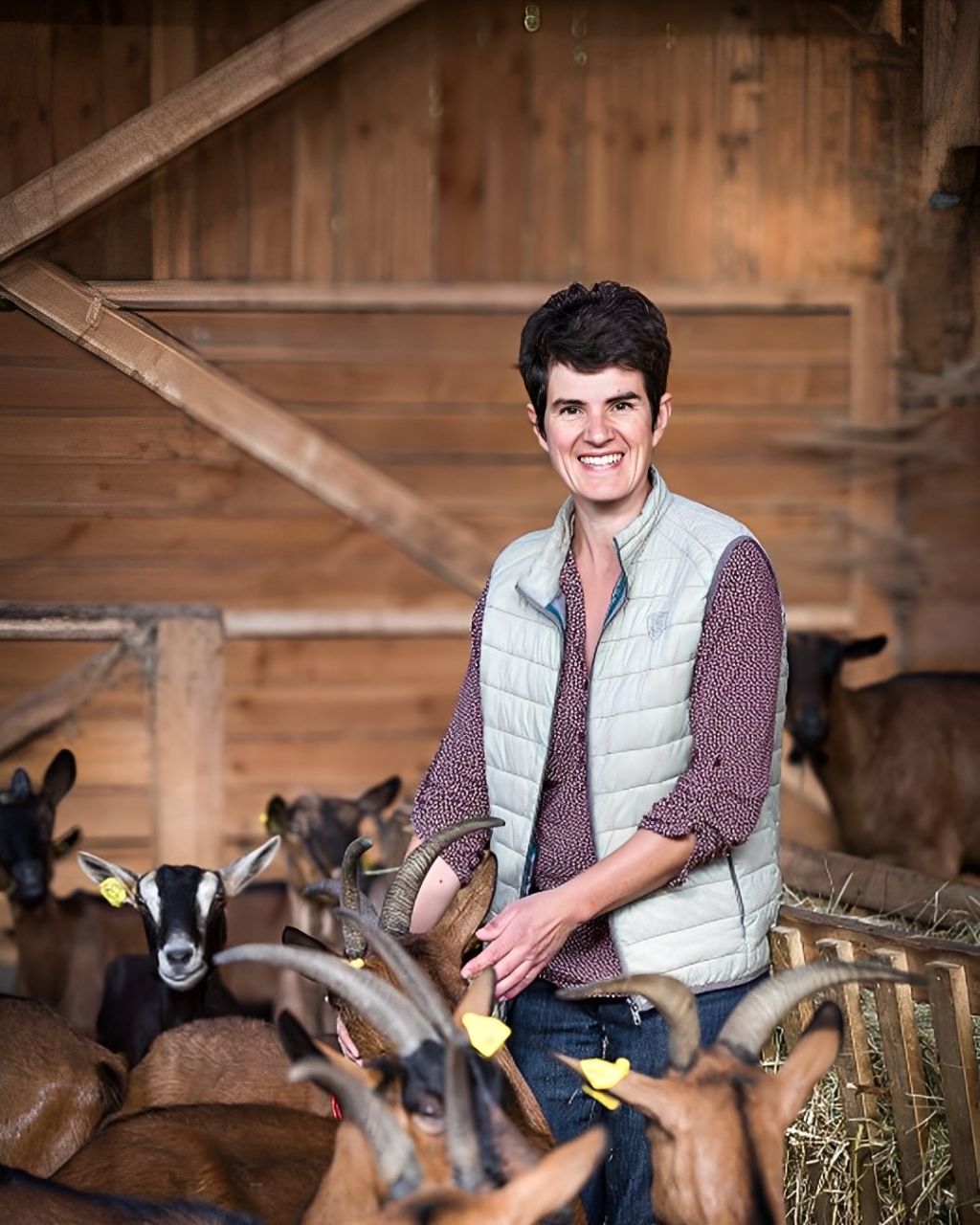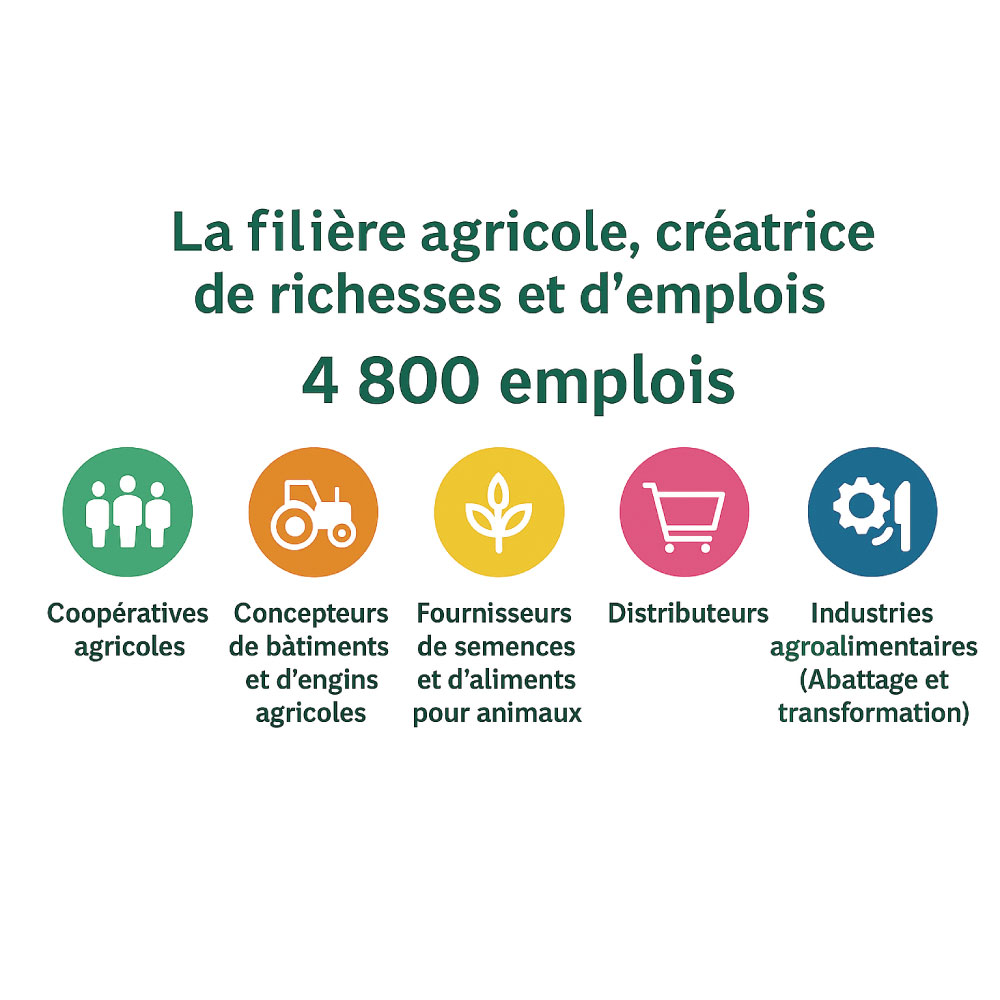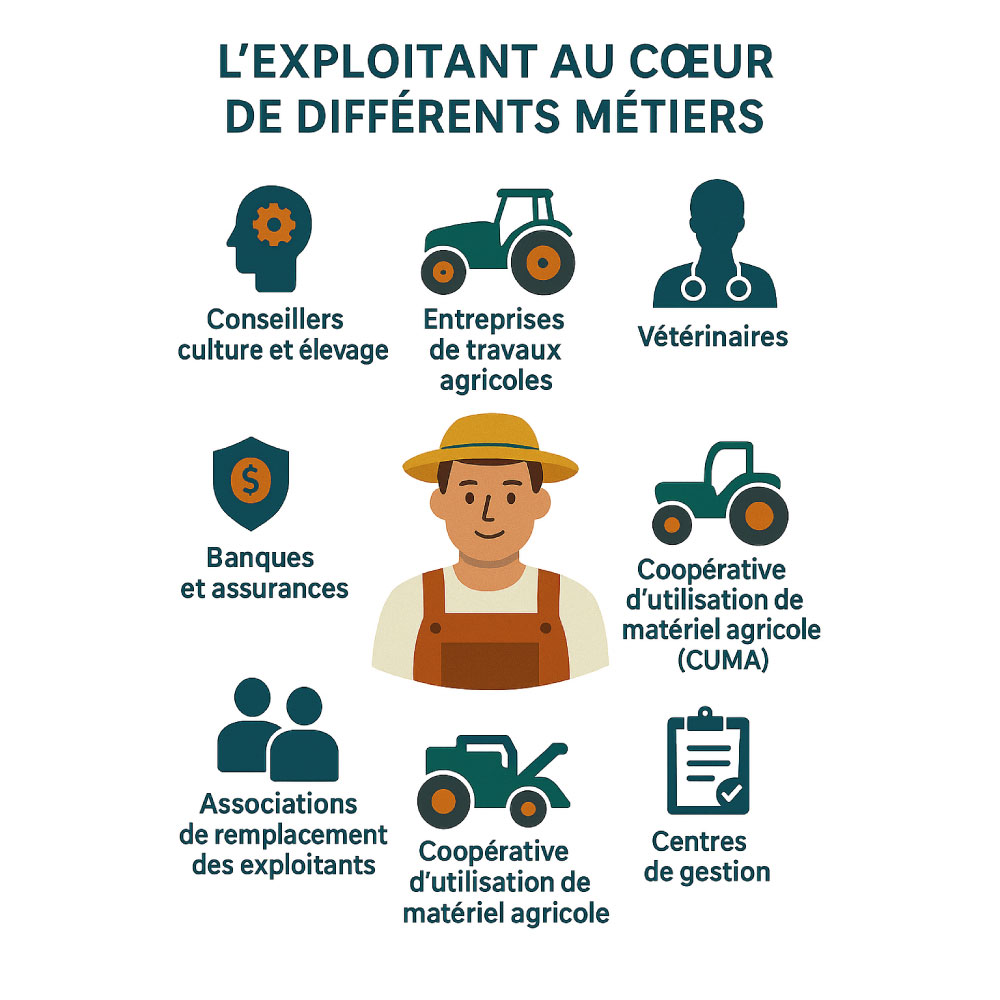
Agriculture :
a strong identity for the region
Agriculture is a major economic component of the Ancenis region. Its economic function of creating wealth and jobs, and its social and environmental role, make agriculture a key player in the growth, cohesion and identity of the region. Today, its products, its short distribution channels and its markets make a major contribution to the good life we all want to enjoy here!
Key figures
- 68 Home of the land area maintained and developed by agriculture
- 521 Farms
- 762 Farmers
A bit of history
The hardships of farming in the fields and on the farms have given rise to ingenuity and cooperation in the Pays d'Ancenis. Agriculture has been transformed to become a true symbol of the region's economic dynamism.
Revolution in the fields
The 60s and 70s saw the birth of the first cooperatives. They were the response to the integration of new production, processing and marketing functions in a modernising agriculture. The Ancenis-Saint-Mars-la-Jaille cooperative in Loire-Atlantique (CANA), founded in 1932, diversified its activities considerably.
Cereals and milk were joined by animal feed, dairy and livestock production, followed a few years later by a cheese factory, a butter factory and a slaughterhouse. In 2003, the cooperatives CANA, CAVAL and Groupe Centre Atlantique (GCA) joined forces to form the TERRENA cooperative group. Today, it is the main cooperative employer in our region, with over 20,000 members.

L’agriculture est dans notre culture !
A solid, well-structured agricultural region
With 60,000 hectares of utilised agricultural land, the region boasts a solid and diversified agricultural base.
Most of the land is given over to fodder (meadows and maize silage) (56%), confirming the importance of livestock farming in the local landscape. This is followed by cereals and oilseed and protein crops (39%), with a small proportion devoted to viticulture and arboriculture (1%), and 3% devoted to other local crops.
The average size of the farms is 107 hectares, reflecting the significant size of the farming structures, adapted to today's needs.
A solid industry that plays an active role in the region's economic dynamism and identity.

À la fois de l’élevage et des cultures diversifiées
Organic farming
Local agriculture is characterised by a strong focus on organic farming and short distribution channels.
Around fifty farms are involved in organic farming, representing almost 10% of the total. Of these, 60% use short distribution channels, with cattle farming predominating (55%) and market gardening (20%).
Proof that local roots and proximity to local people remain strong values in the region.
Winegrowing also plays a key role, with 14 winegrowers cultivating nearly 155 hectares of vines. The range of wines produced here is both varied and renowned, with renowned appellations such as Coteaux d'Ancenis white Malvoisie, Muscadet Coteaux de la Loire, IGP Val de Loire, as well as Coteaux d'Ancenis red and rosé, not forgetting the prestigious Cru communal Champtoceaux.
There are 521 professional farms in the region, reflecting a strong focus on livestock farming.
In fact, 76% of the farms are involved in livestock farming, with a wide range of products:
- 21% beef cattle,
- 19% dairy cattle
- 12% poultry and rabbits (granivores),
- 11% other livestock (sheep, goats, etc.)
- 9% mixed beef,
- 4% pigs.
Alongside this predominance of livestock farming, 14% of farms are involved in arable farming, which is also varied:
- 10% mixed farming - poly-breeding,
- 6% specialised crops (arboriculture)
- 6% arable farming,
- 2% viticulture.

Une agriculture créatrice d’emplois
Local agriculture: who are our farmers?
The region is home to 762 farmers, who play a vital role in our living environment and economy.
The average age of farmers is 48, and almost a third(23%) are women, confirming the growing role of women farmers in the sector.
In terms of organisation, 40% of farms are sole proprietorships, while 60% operate as partnerships, illustrating a trend towards working together and pooling resources.
Local, lively and diversified agriculture, shaping our region every day.



What is the future of agriculture today?
The region is shaped by agriculture. 68% of our land is given over to agriculture. The sector is, and must remain, a driving force in our region! So how can we continue to support our farmers, enabling them to make a decent living from their work while preserving the quality of our land and their products? That's what's at stake in the regional agricultural strategy, which is the fruit of a genuine diagnostic exercise carried out jointly with the Pays de la Loire Region's Chamber of Agriculture, in its role of representing all the sensitivities of the agricultural world. This analysis will enable the region to
- Build a shared project for agriculture with the agricultural profession and for the region.
- Integrate regulatory plans into a structuring document.
- Ensure that action planning is consistent across the board.
- To communicate in a global framework on the challenges and actions undertaken.
The good taste of short distribution channels
Sourcing local produce is becoming a matter of course!
Short distribution channels are catching on: almost 20% of farms in the Ancenis area generate part of their turnover via a short distribution channel. For the past decade, consumer habits have tended to turn towards short, local supply chains. This trend accelerated in 2020 with the pandemic, during which French households sought to secure their supplies from local producers.
This approach to buying local puts the emphasis back on a relationship of trust with producers and a better knowledge of the products consumed, while respecting seasonality. For others, it's also an opportunity to select products, create social links and respond to ethical concerns. Given the diversity of products on offer in the Ancenis region, it would be a shame to miss out!
Sources: Pays de la Loire Chamber of Agriculture - Key figures 2023

